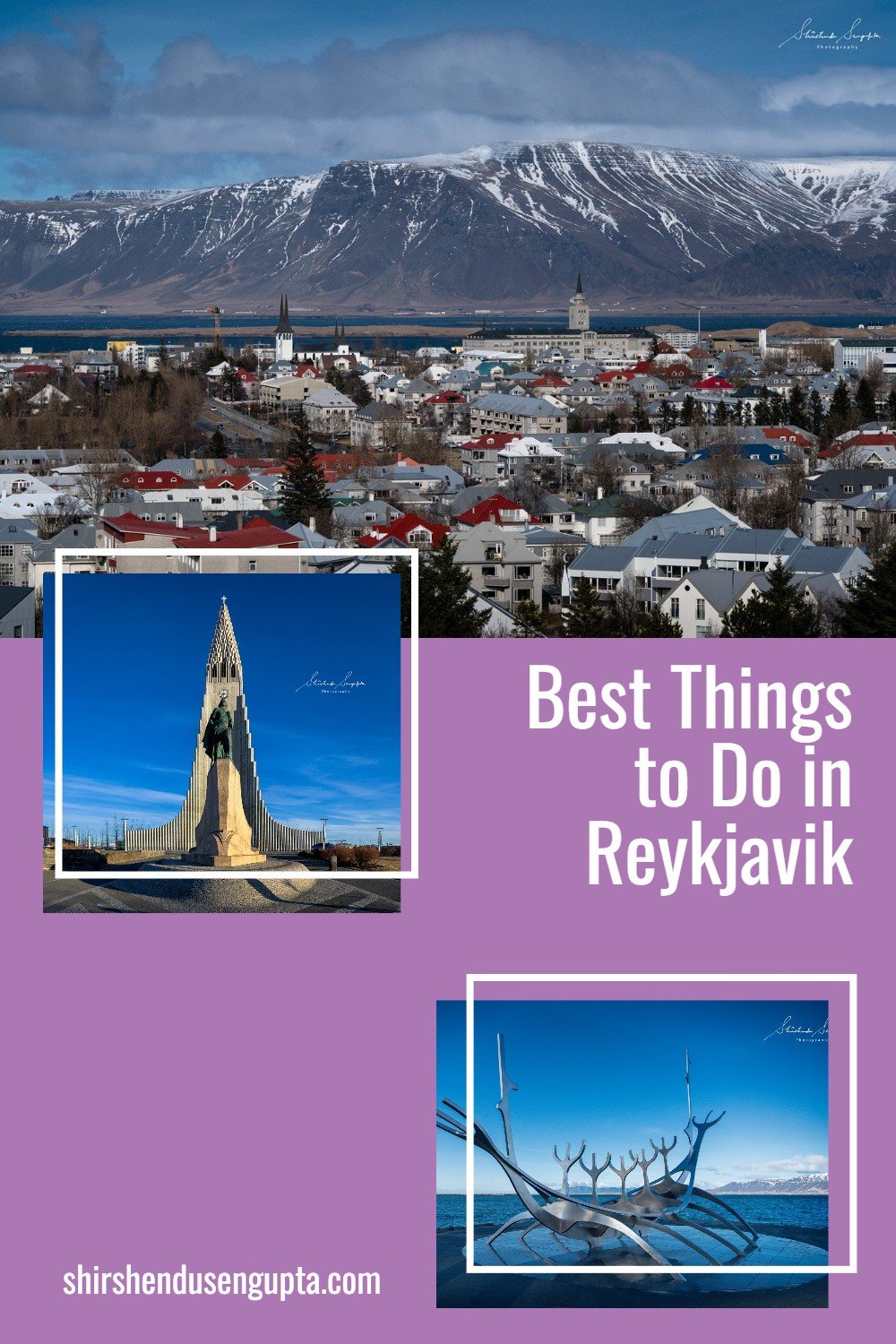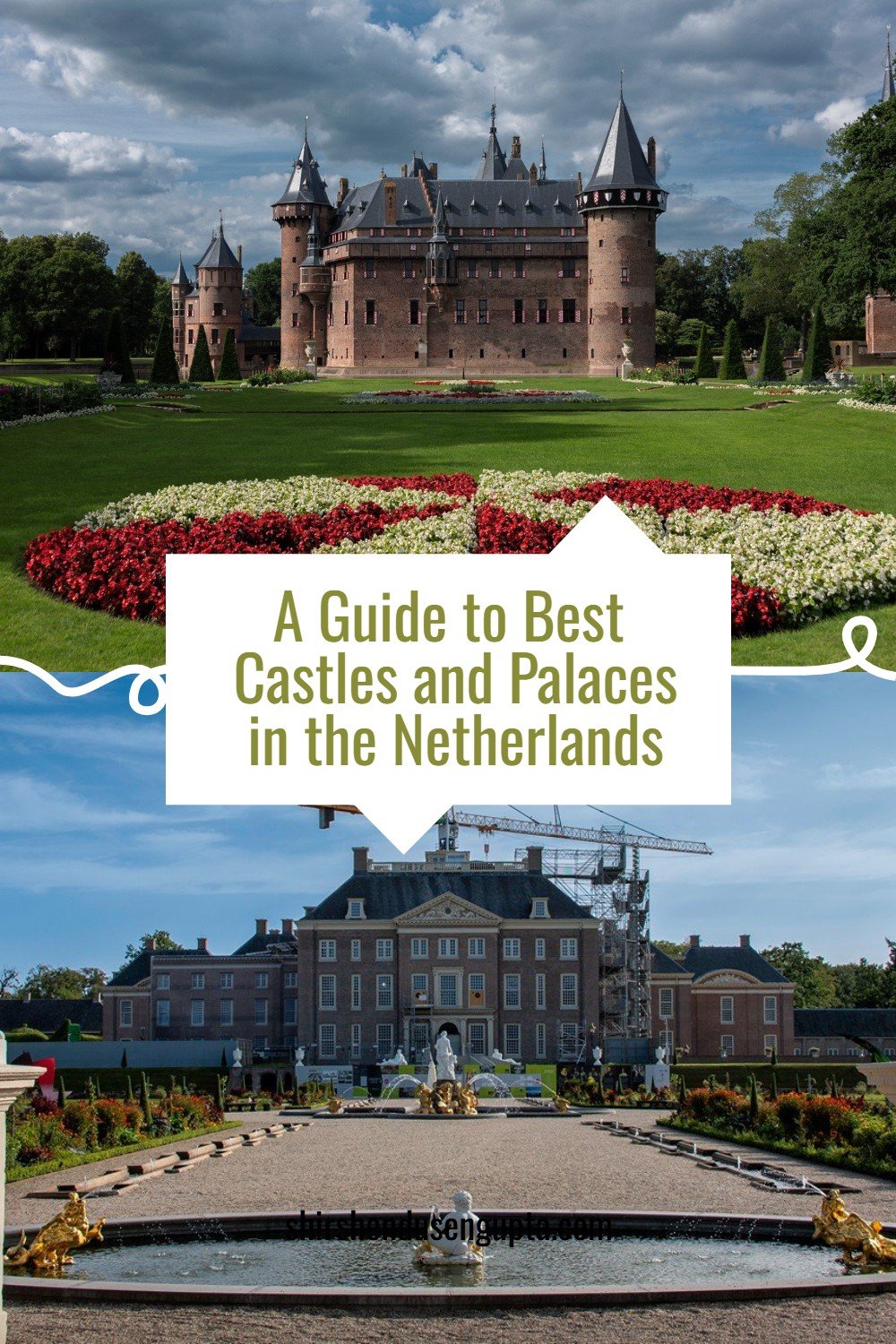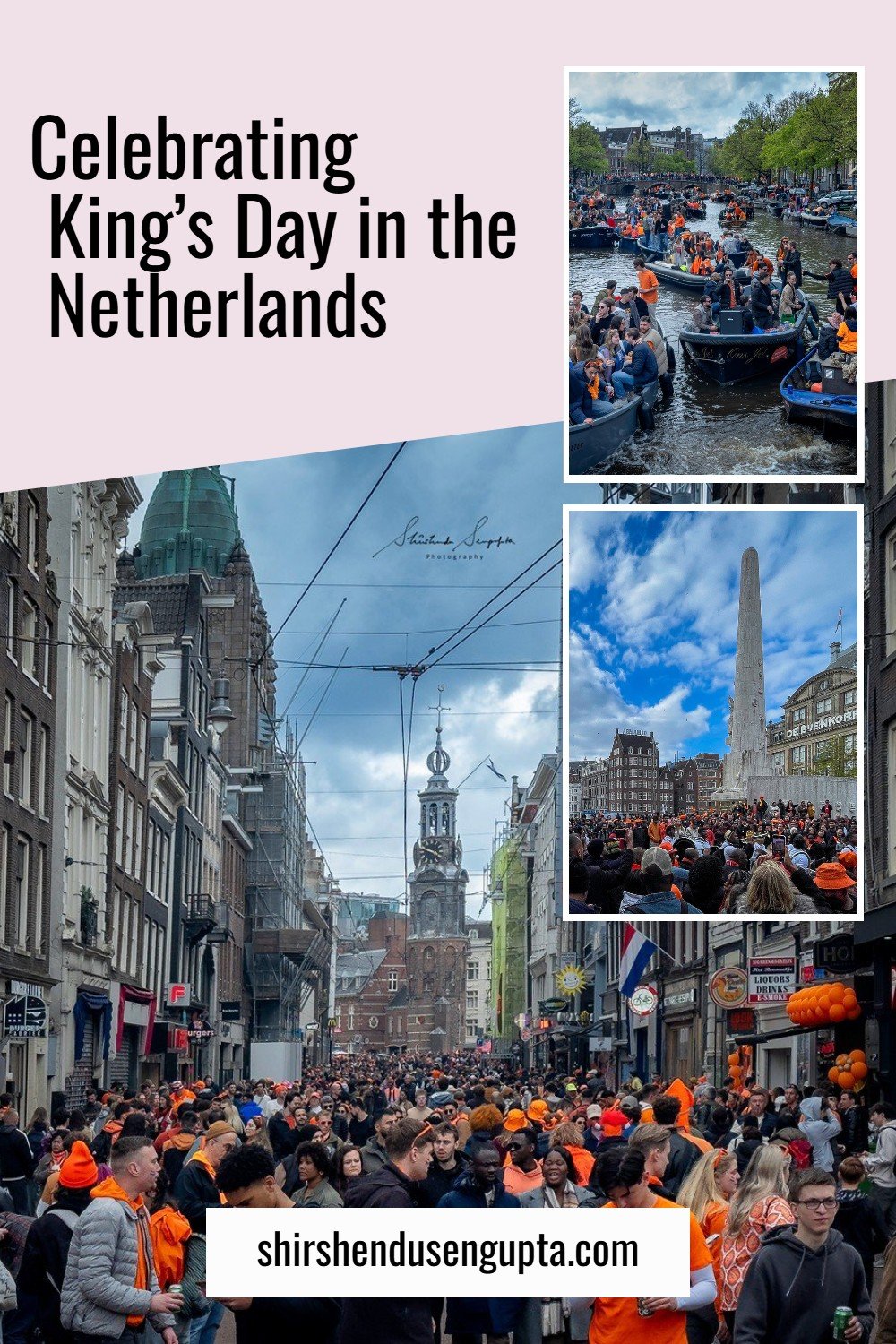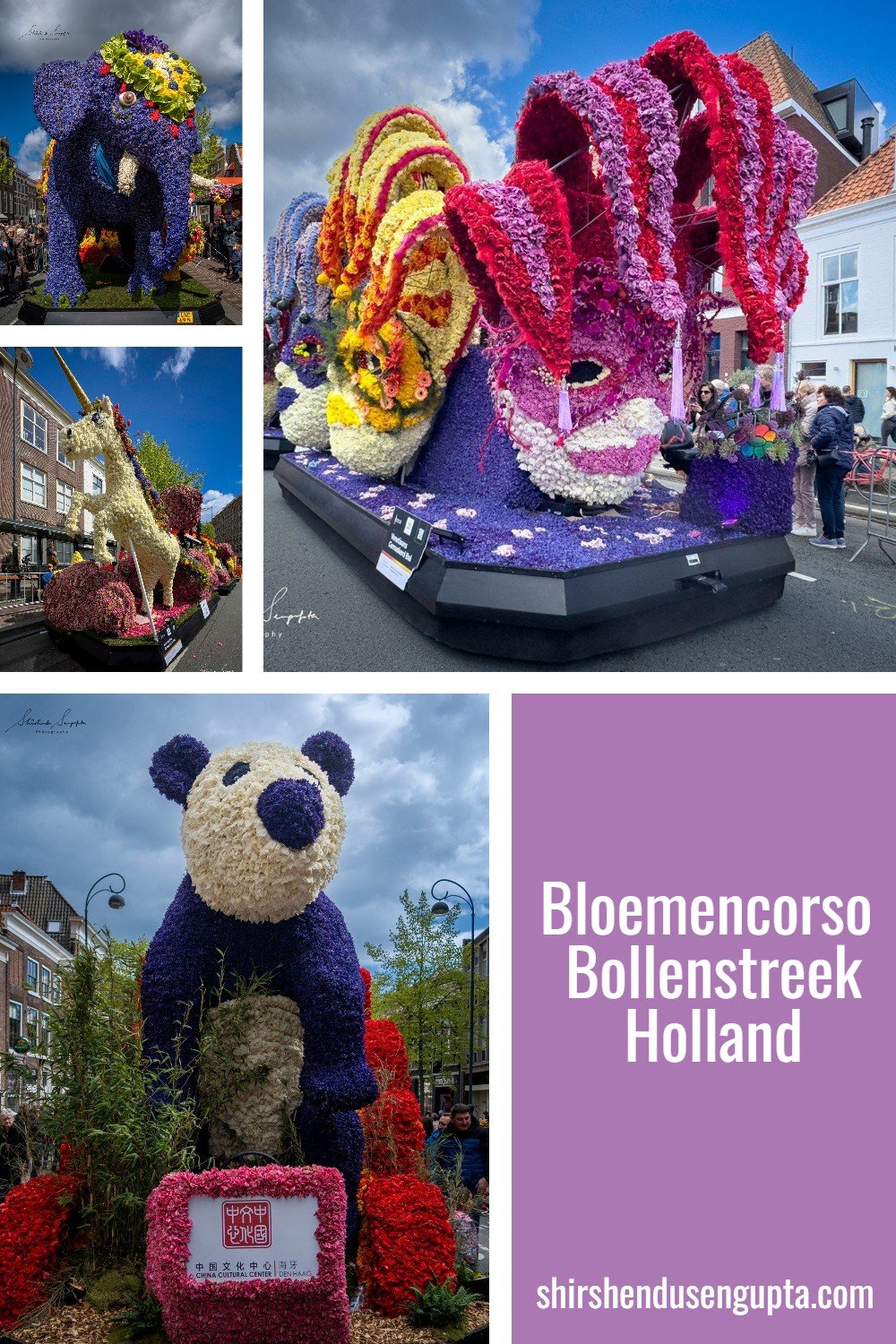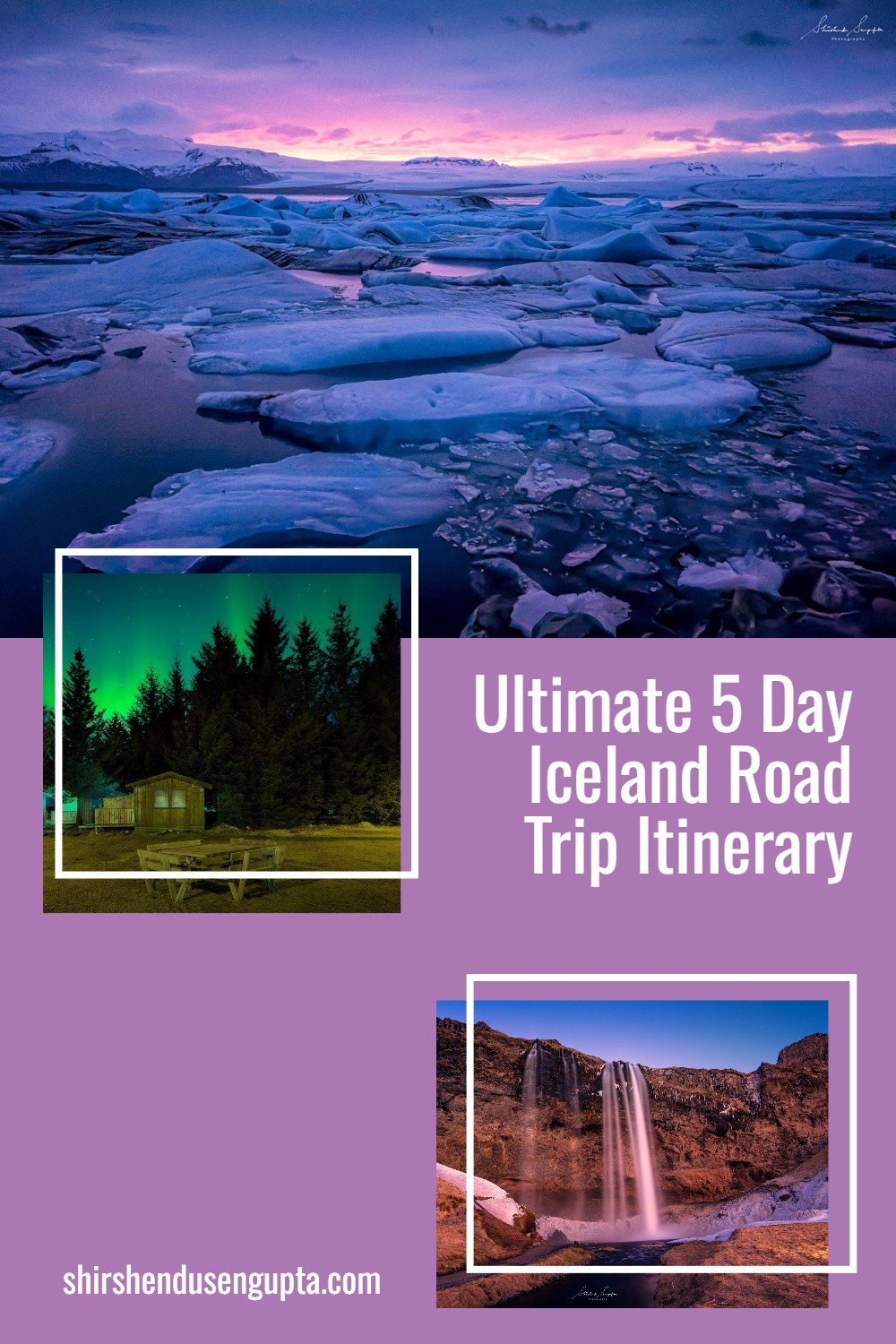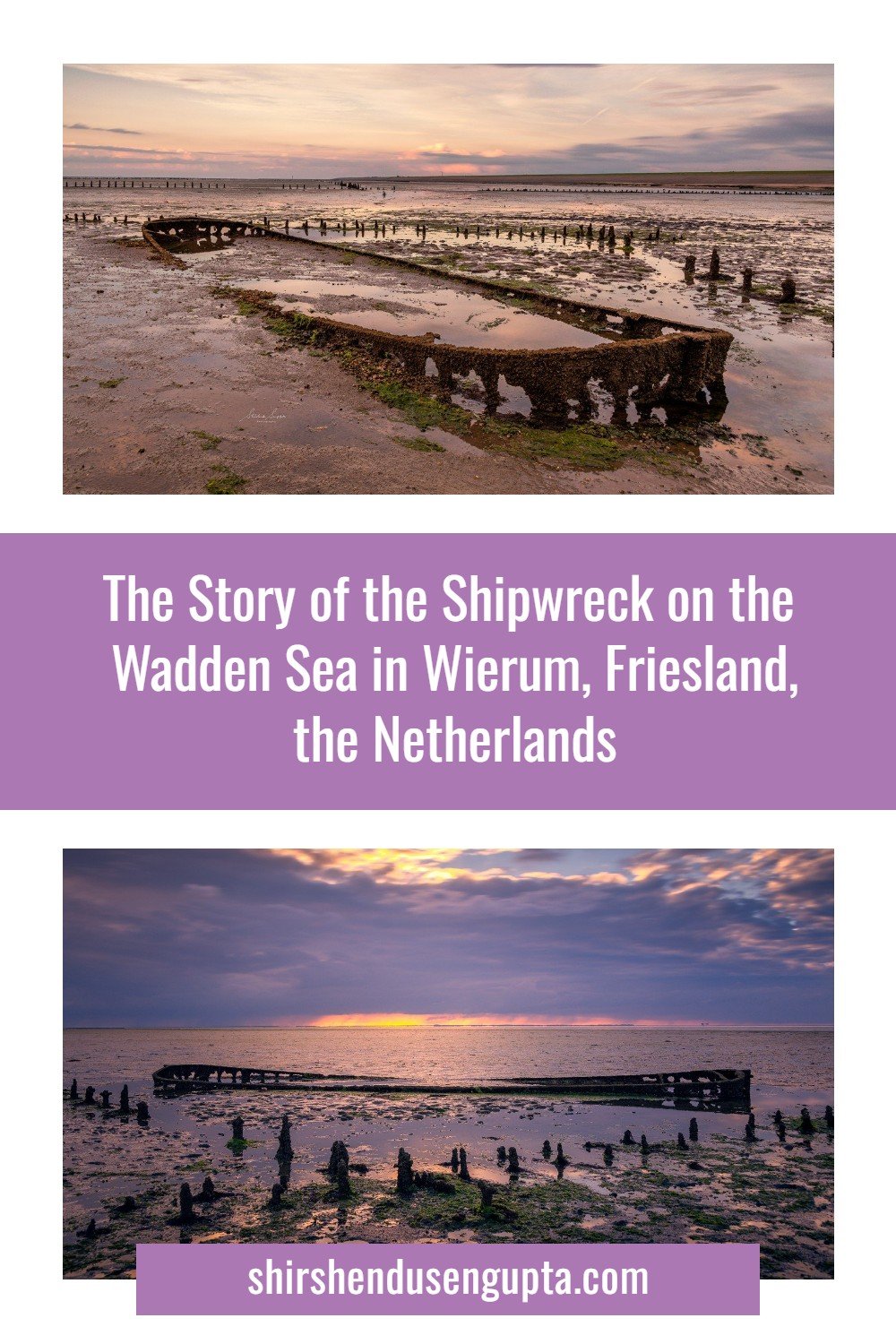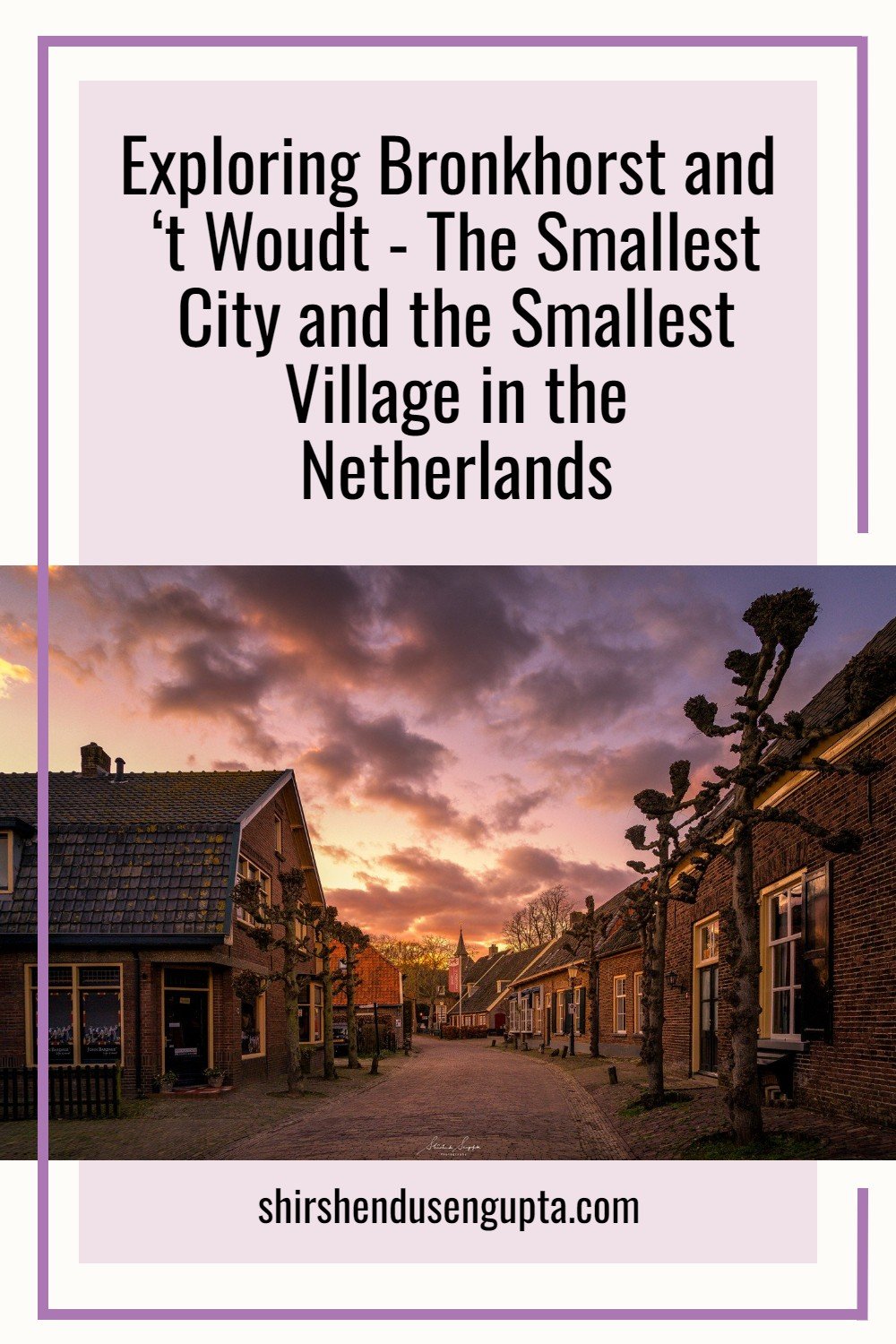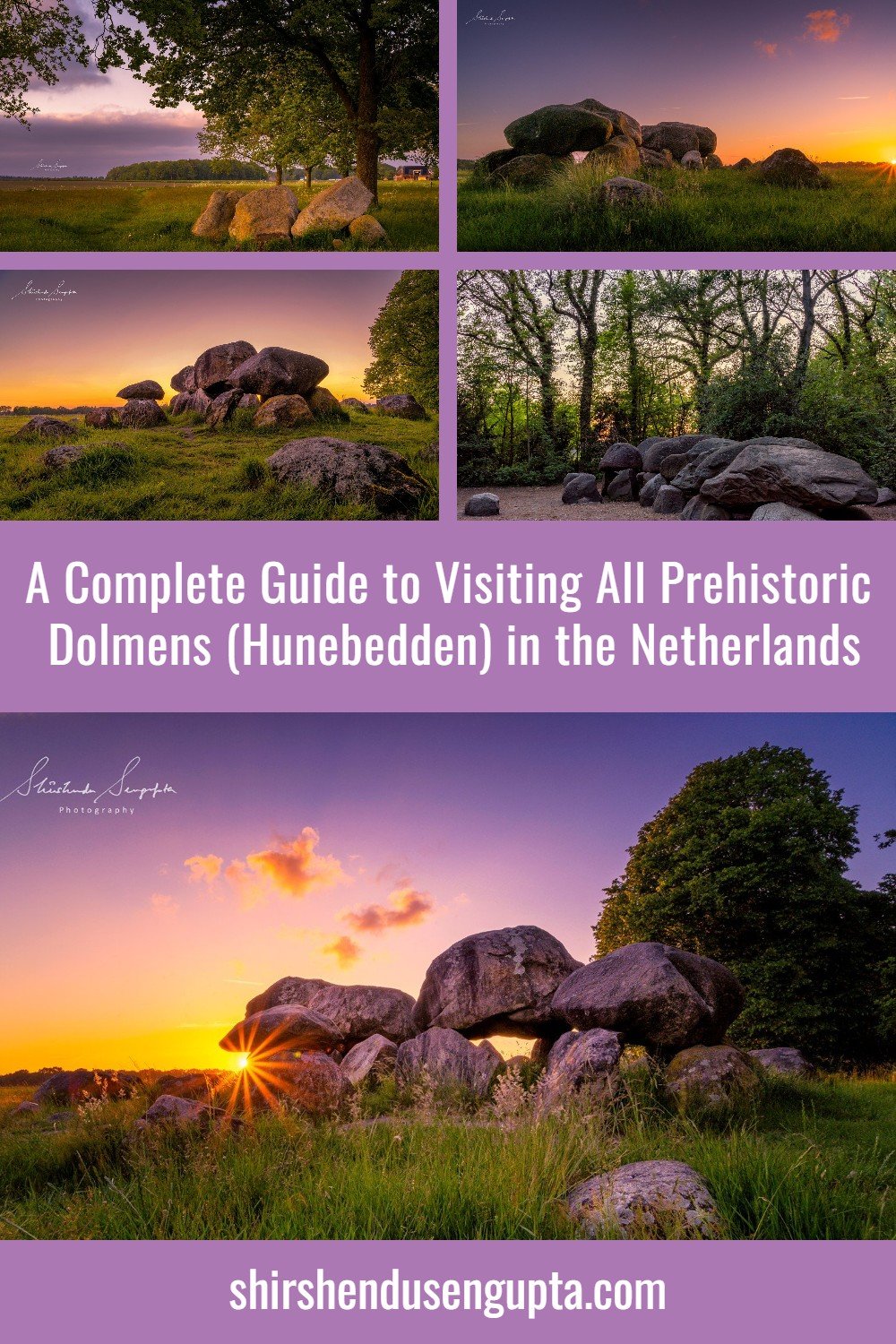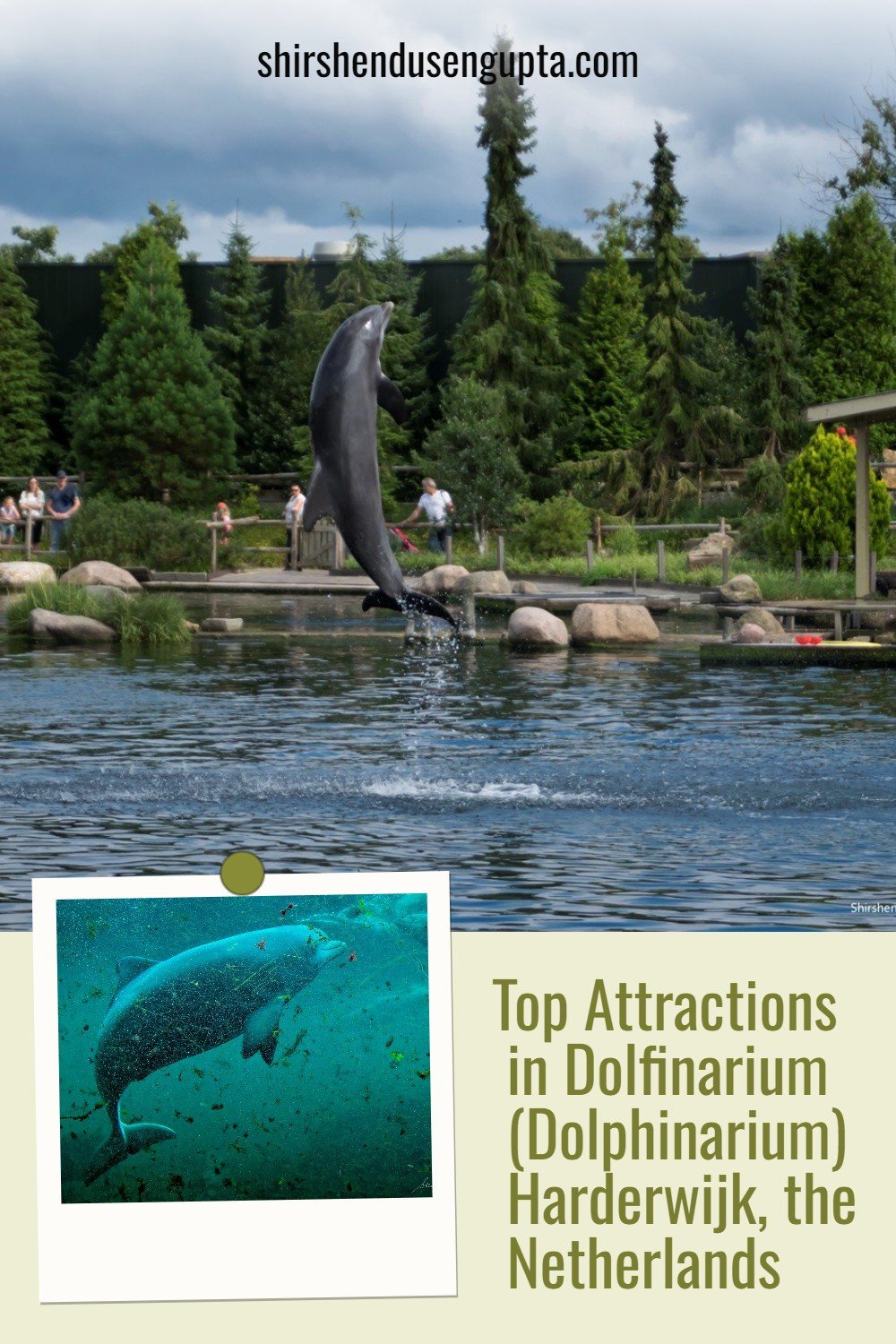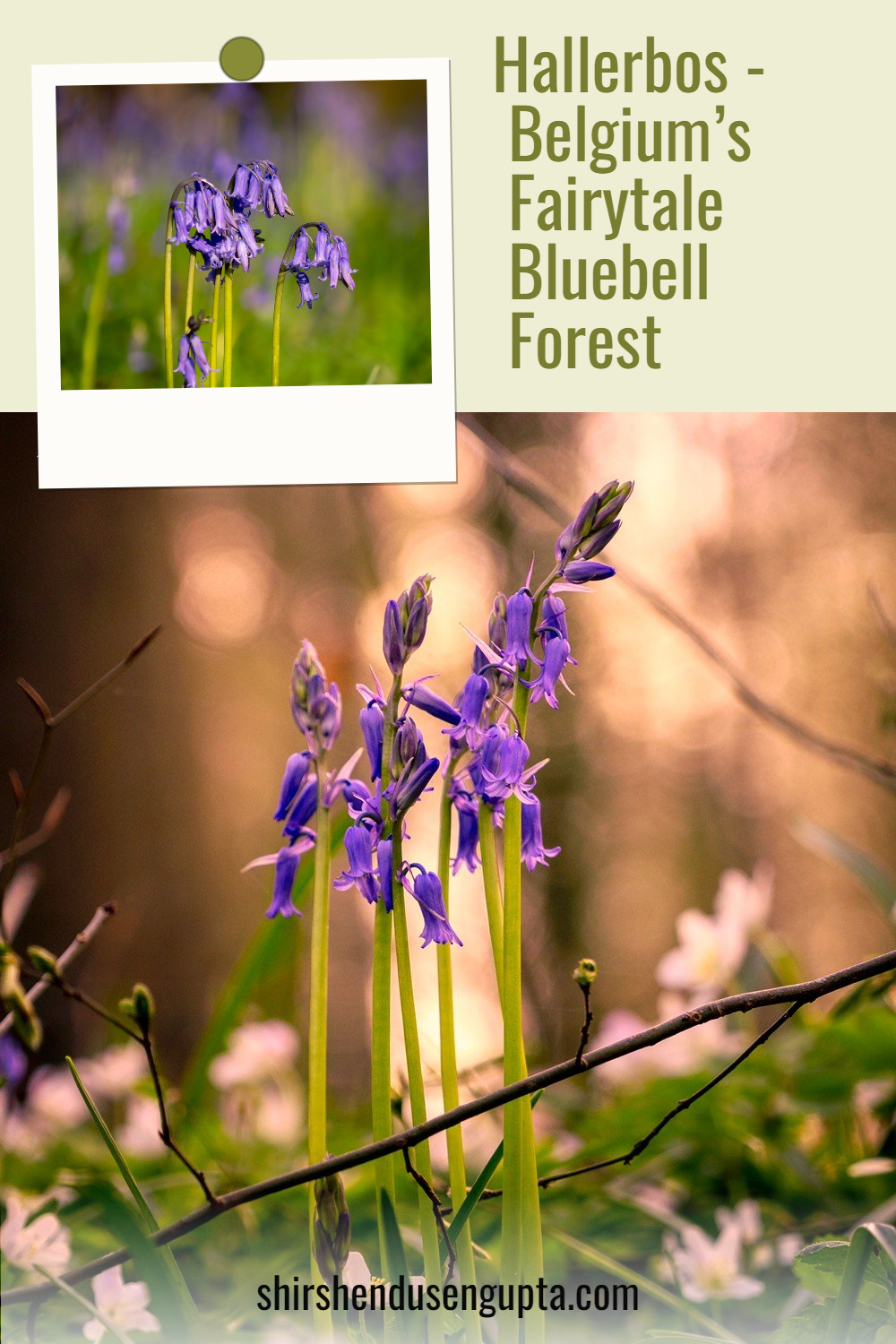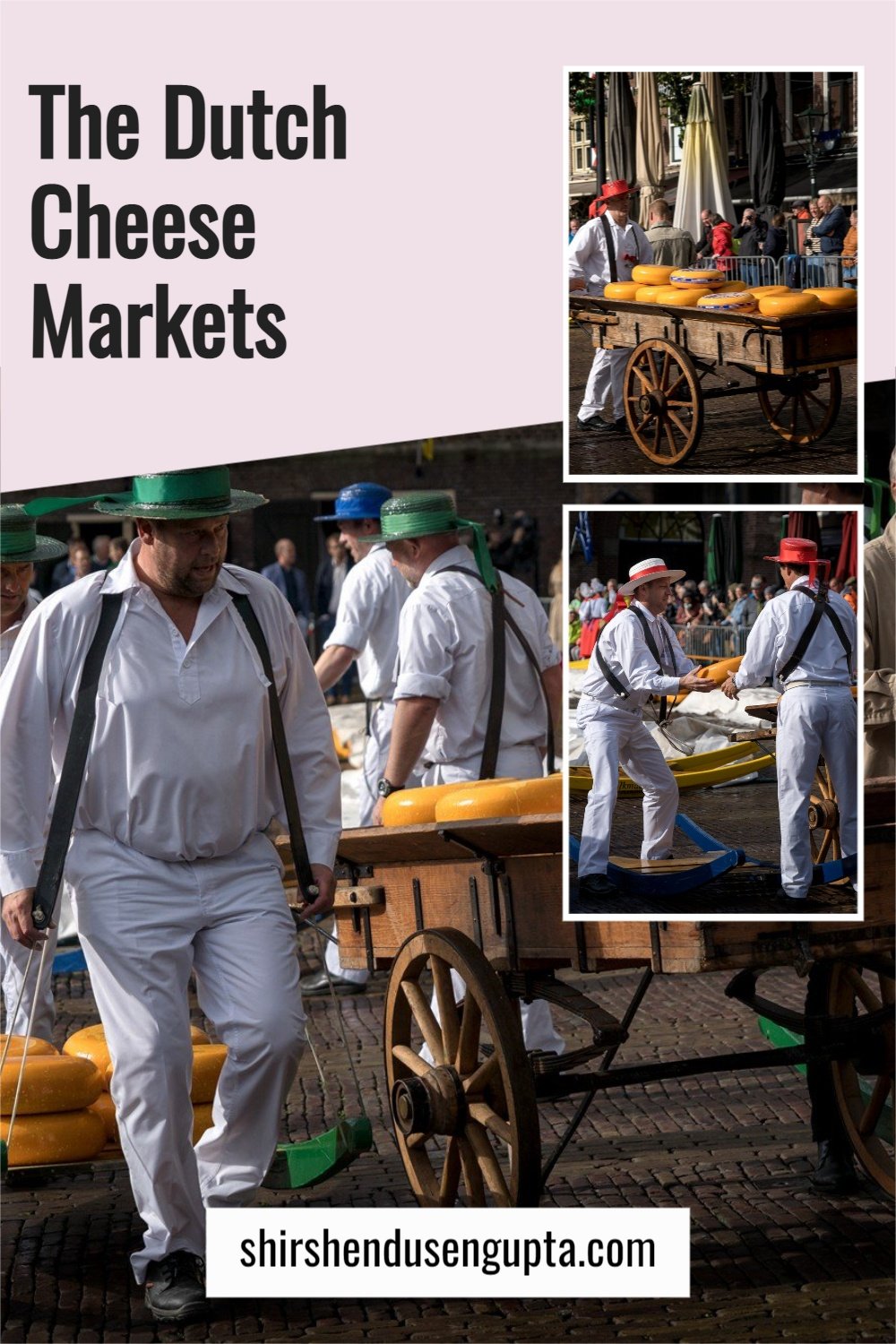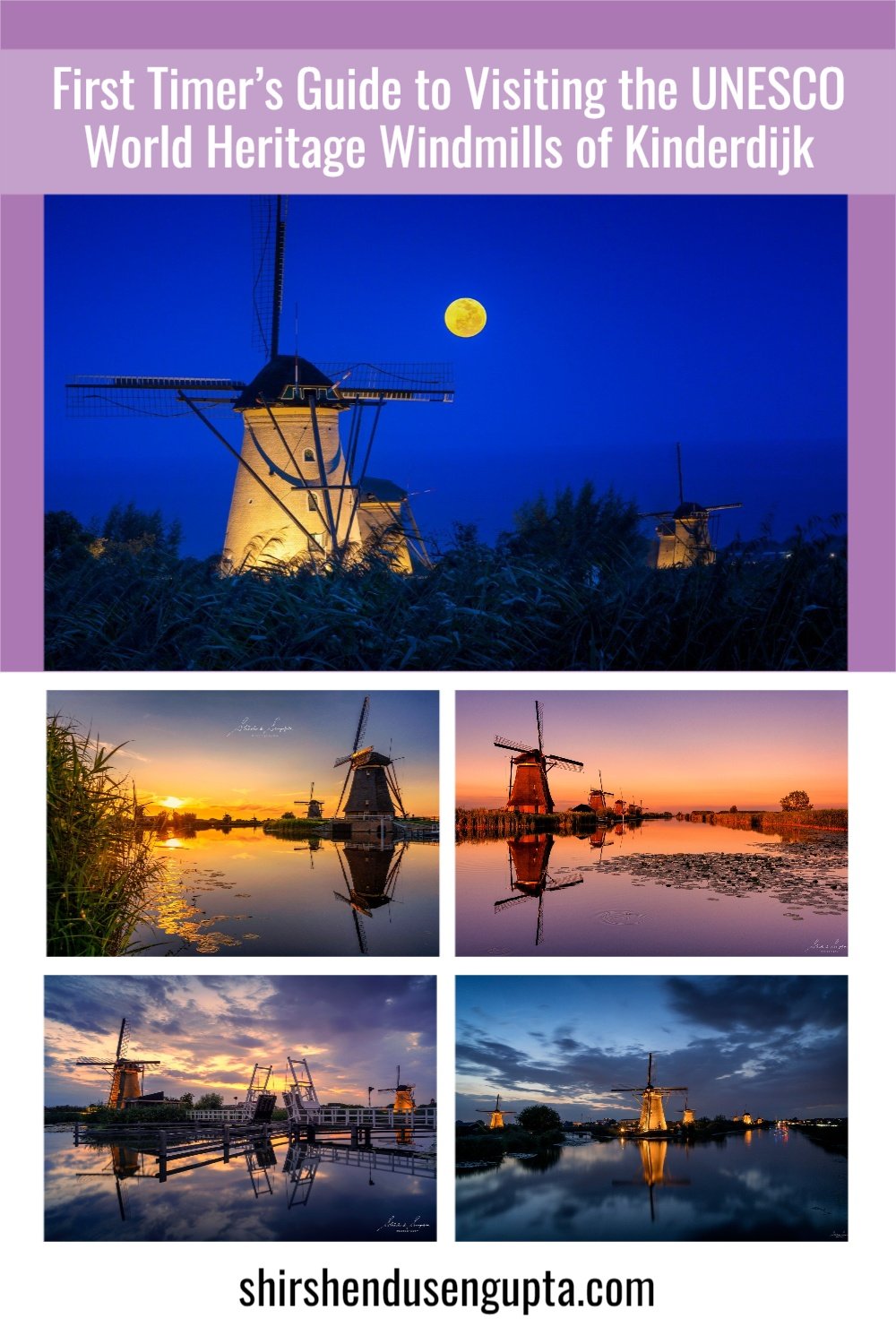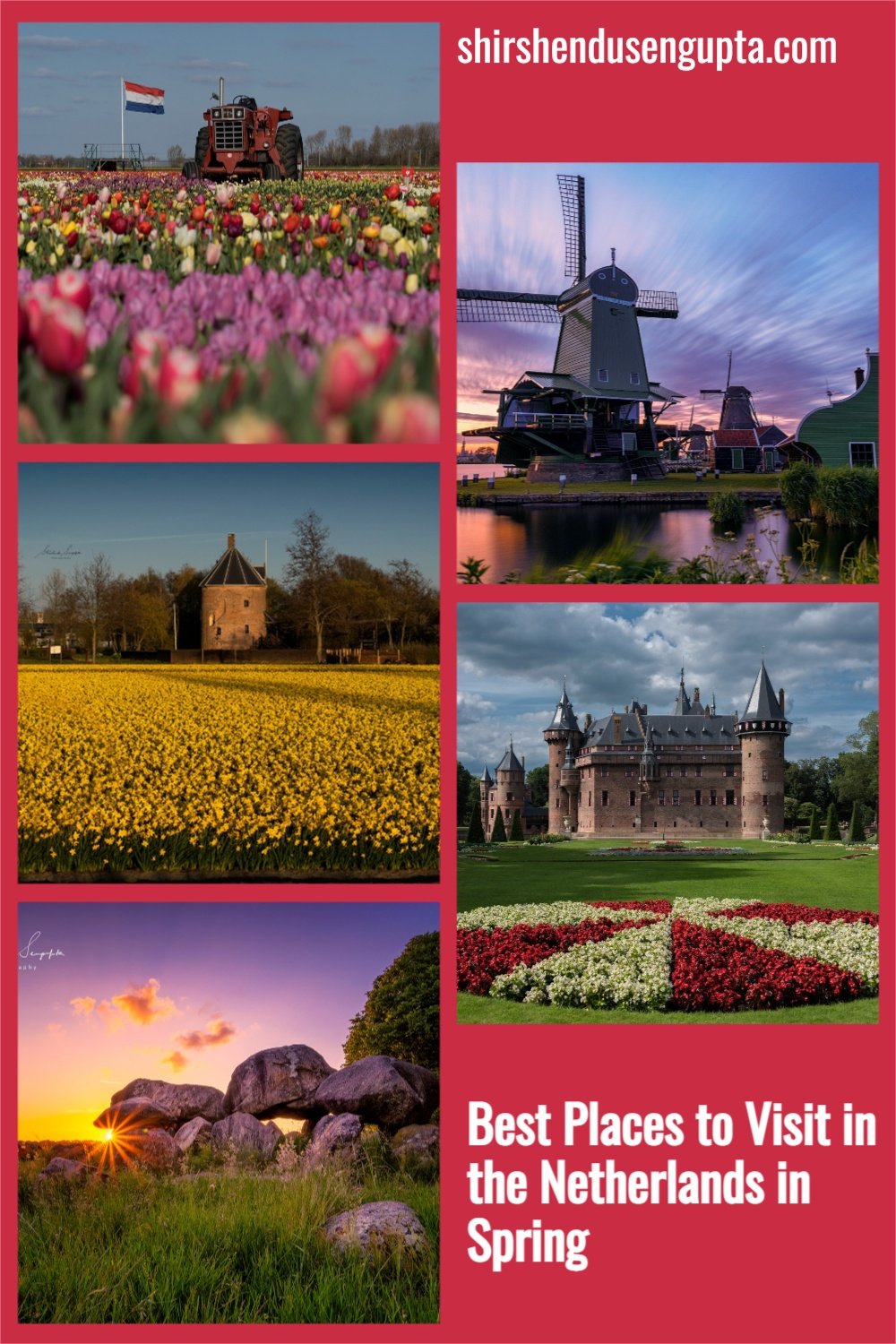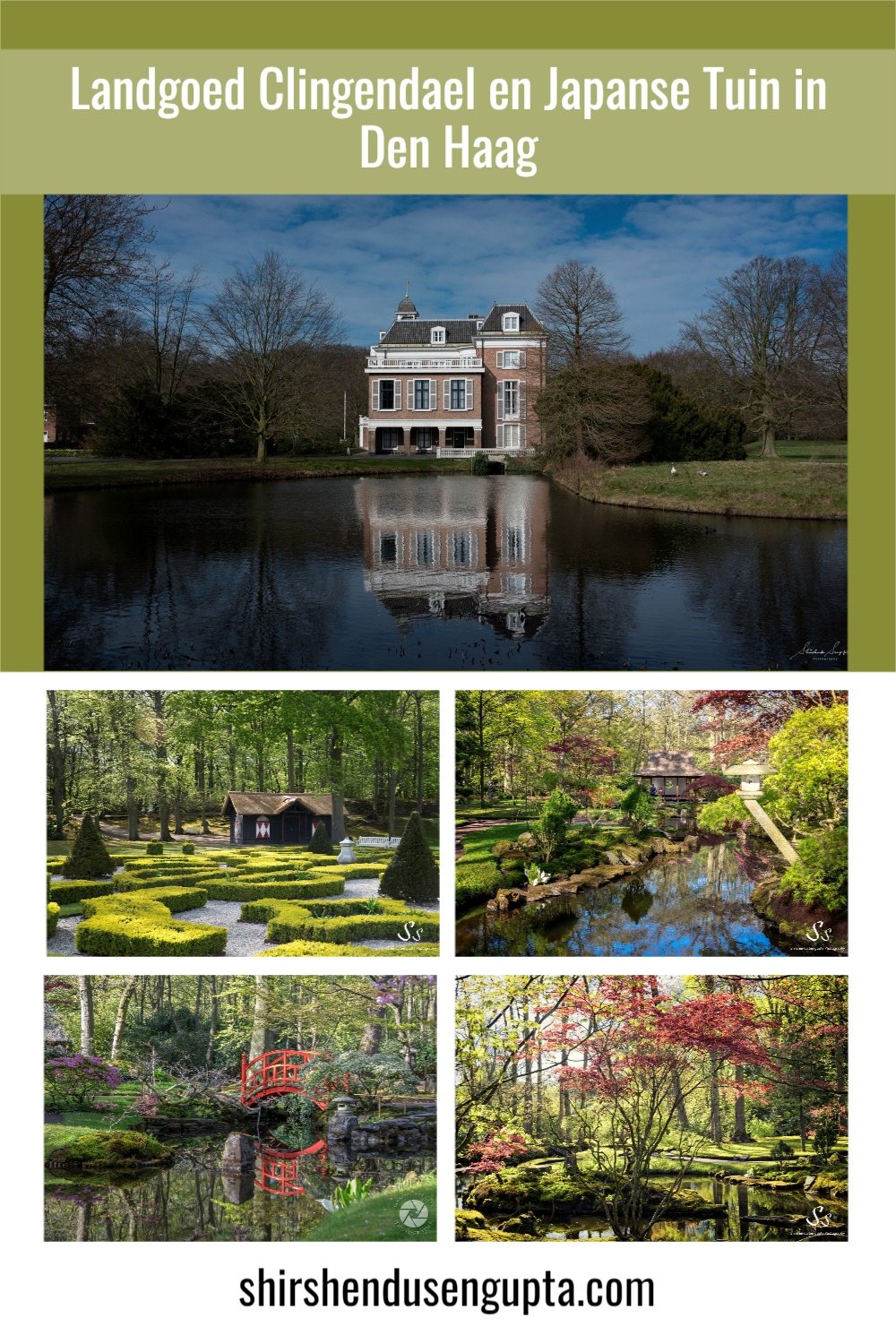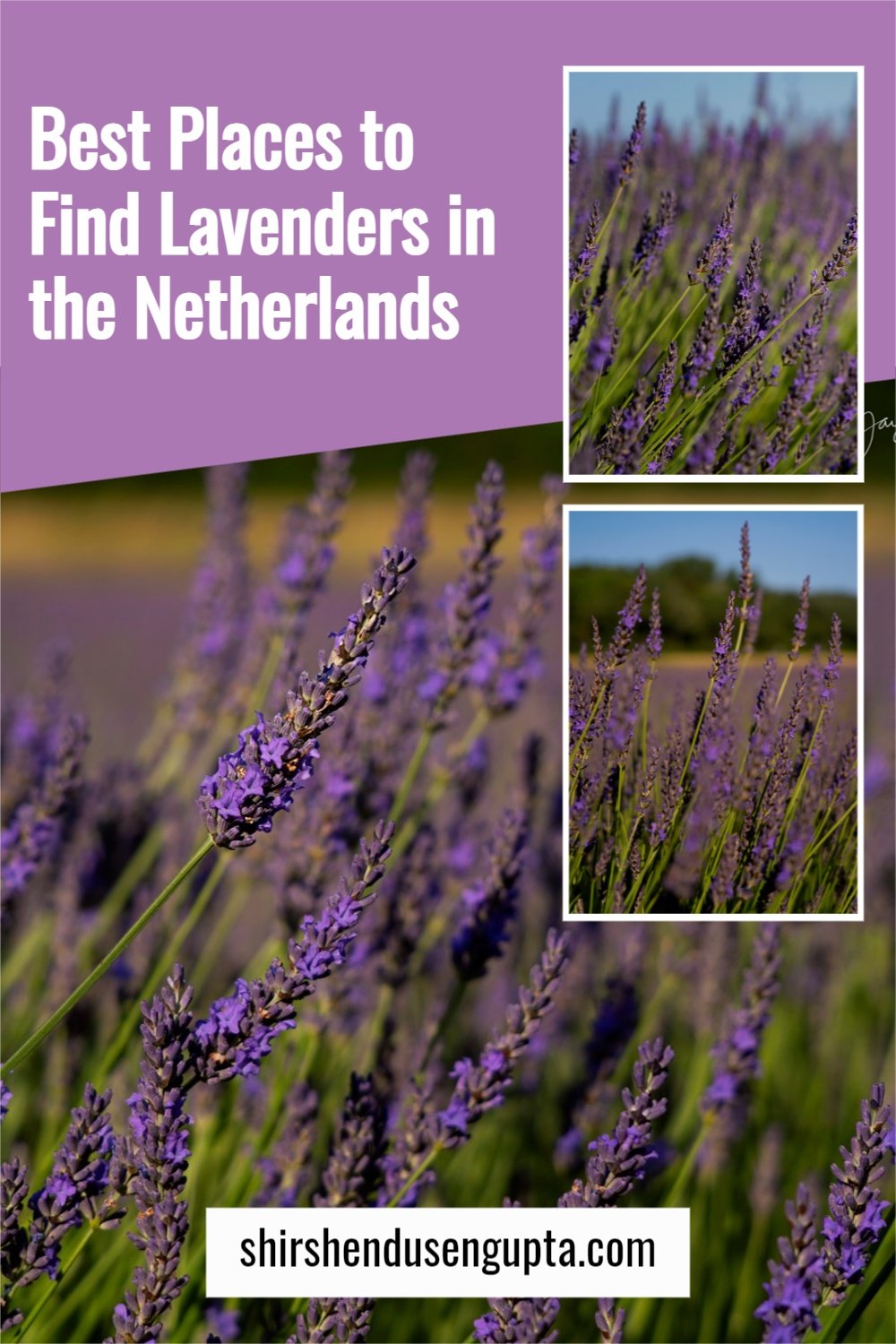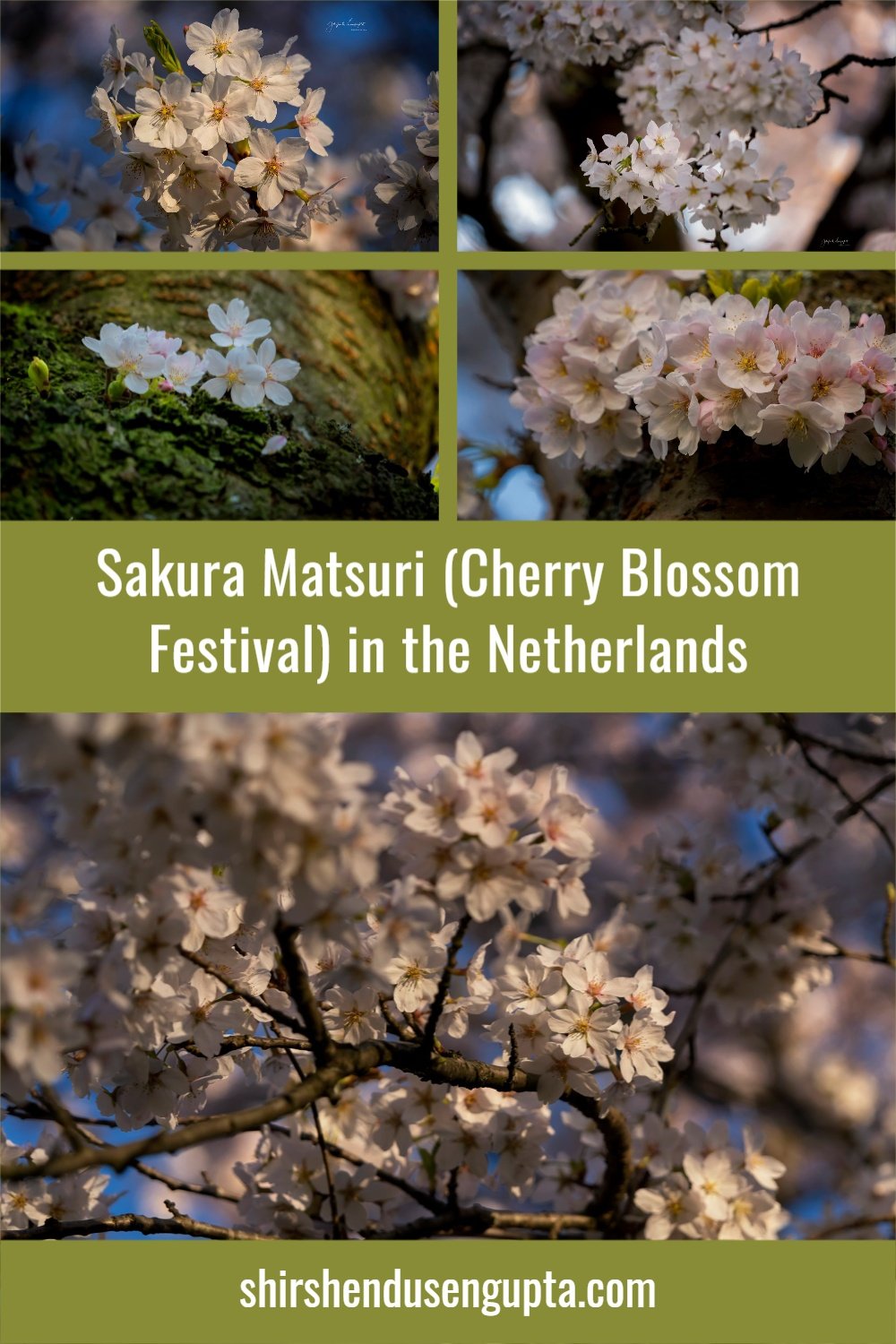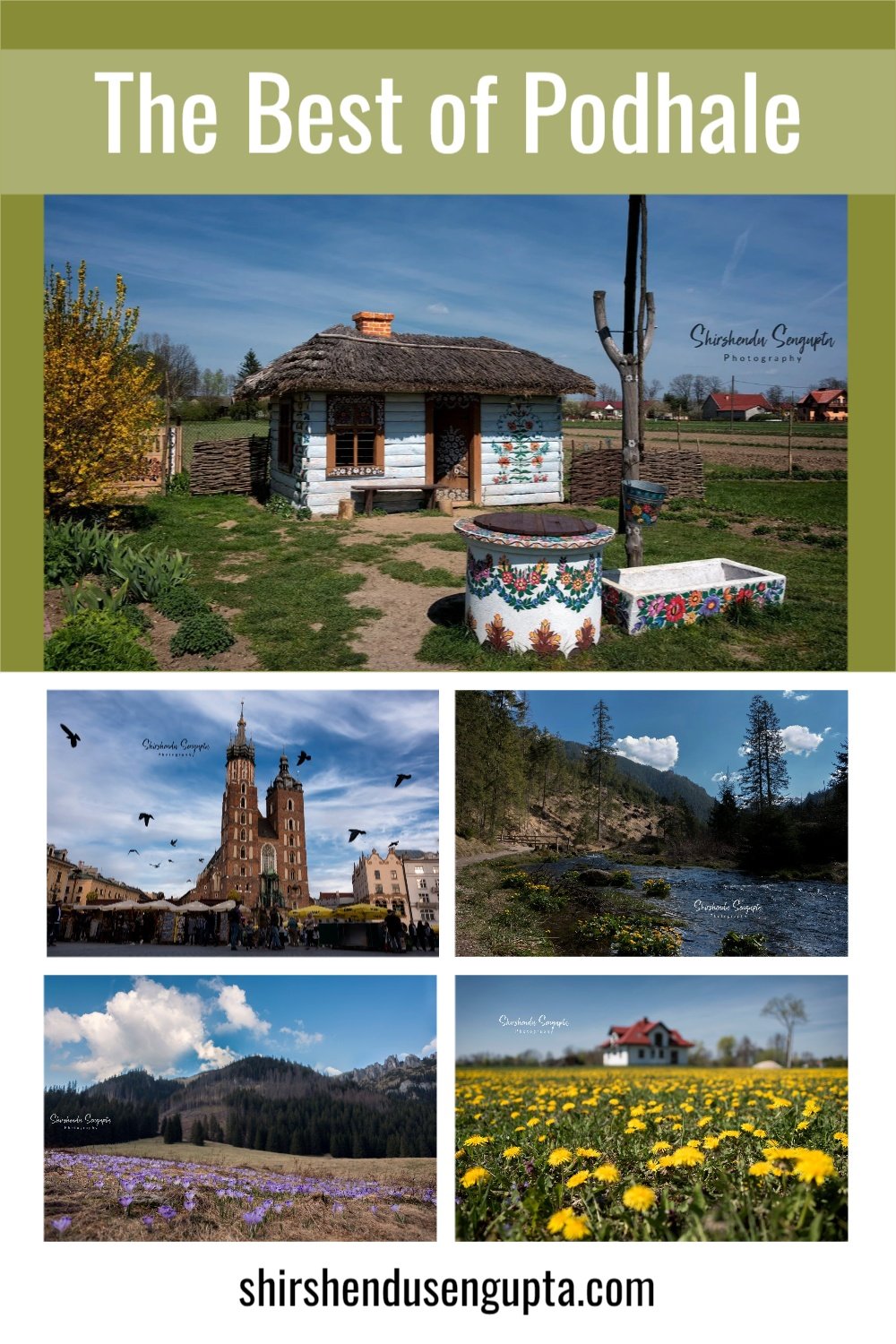29 Best Places to Visit in the Netherlands in Spring | 29 Best Things to Do in Spring in the Netherlands | 29 Reasons to Visit the Netherlands in Spring
Spring in the Netherlands
Spring is undoubtedly the most fascinating season in the Netherlands and therefore, the best time for tourists to visit this beautiful country. After dull, grey, and cold winter months, as the sun starts peeping through the clouds, the sky turns blue and the days get longer and warmer, you know spring is in the air. And during these spring months of mid-March to mid-May, being the largest exporter of flowers globally, the whole country transforms into a vast ocean of flowers. It starts with cherry blossoms, crocuses, daffodils, and hyacinths between mid-March and mid-April, followed by the famous tulips between mid-April and mid-May. This makes it a great time to explore the Dutch countryside.
Today I’m going to take you along with me on a ride across the 29 best places to visit in this beautiful country in spring. Let the journey begin!
29 Best Places to Visit in the Netherlands in Spring
1. Kersenbloesempark (Cherry Blossom Park)
The best place to see cherry blossoms and celebrate Sakura Matsuri in the Netherlands is the Kersenbloesempark, or the Cherry Blossom Park in Amstelveen, approximately 20 km south of Amsterdam. It is a part of the Amsterdamse Bos (Amsterdam Forest) that is canopied by a wide pink-white umbrella between mid-March and mid-April.
To know more about the Cherry Blossom Park, please read our article Sakura Matsuri (Cherry Blossom Festival) 2026 | Celebrating the Advent of Spring at Kersenbloesempark (Cherry Blossom Park) in Amstelveen, the Netherlands.
2. De Bloemenroutes (The Flower Routes) - Bollenstreekroute (Bulb Region Route), Goeree-Overflakkee Tulpenroute (Tulip Route), Flevoland Tulpenroute (Tulip Route)
When you think of the Netherlands, the first thing that comes to your mind is an endless ocean of vibrant flower fields. Soon after the first tulip was planted on the Dutch soil in the mid-sixteenth century, the country saw a tremendous floral revolution and the founding of a horticultural industry that later converted their lowland country into the global hub of flower trade. Today, being the largest exporter of flowers in the world, the Netherlands makes up around two-thirds of the world's total floral sales. Believe it or not, you can actually buy flowers in New York which were freshly cut in the Netherlands that morning; such is the efficiency of the Dutch floral supply chain. Due to this remarkable achievement, we stand no chance and we have no choice but to dub this beautiful country 'The Land of Flowers!'
Literally meaning 'Flower Route,' a ‘Bloemenroute’ refers to car/bike routes along the flower fields of the Netherlands. If you google, you will find many websites that talk about many such ‘Bloemenroutes’ and/or provide maps that focus more on the driving/biking ‘paths’ but do not pinpoint the exact location of the flower fields. They leave it up to you for discovering them along the way. This makes it very difficult to put the address of the flower fields in your car’s GPS, or know which are the fields that are easily accessible to get inside (most of the fields are separated from the road via canals or are fenced), or even know where to park your car to get to the fields.
That’s why I wrote an article De Mooiste Bloemenroutes van Nederland | 4 Best Road Trip Flower Routes around Tulip, Daffodil, and Hyacinth Bulb Fields in the Netherlands, along with the exact locations of the flower field from my experience of living in the municipality of Haarlemmermeer, the so-called ‘headquarters’ of the Bloemenroutes, and that of chasing flower fields for the last 9 years in the Netherlands.
3. Keukenhof - The Garden of Europe
Apart from these tulip routes, you must visit the world-famous Keukenhof in Lisse. Also dubbed ‘The Garden of Europe,’ it is the largest flower park in the world. Built over 79 acres (32 hectares) of land, Keukenhof boasts a vibrant display of 7 million flower bulbs comprising tulips, daffodils, hyacinths, lilies, roses, carnations, and irises.
To know more about Keukenhof, please read our article De Mooiste Bloemenroutes van Nederland | 4 Best Road Trip Flower Routes around Tulip, Daffodil, and Hyacinth Bulb Fields in the Netherlands.
4. Bloemencorso Bollenstreek
Every year in the middle of April, the biggest spring festival of the Netherlands named ‘Bloemencorso (Flower Parade) Bollenstreek (Bulb Region),’ makes a 42 km journey from Noordwijk to Haarlem, passing by Keukenhof Gardens. For ages, this area's soil and climate have been ideal for growing bulbs from where it derives its name - the bulb region. Several flower parades take place in the bulb region throughout the year but Bloemencorso Bollenstreek is the only flower parade that takes place in the spring and the only one that is made entirely of spring bulb flowers, like tulips, daffodils, and hyacinths. It is also the most well-known across the country and among the biggest editions worldwide. Every year, almost a million spectators watch the parade from the sidelines or from official flower parade grandstands.
To know how to visit the biggest annual spring Flower Parade in the Netherlands, please read our article Bloemencorso Bollenstreek Holland 2026 | Flower Parade of the Bulb Region Netherlands 2026 | Information, Route, Tips, and Tricks.
5. Clingendael Country Estate Park and Japanese Garden
Clingendael is one of the most beautiful country estates in the Netherlands. The estate, which is located halfway between The Hague and Wassenaar, has a colorful past. Several aristocratic families have resided on the estate since the 16th century, and various garden and landscape architects have contributed to the look and feel of this country estate since the sixteenth century. In the nineteenth century, garden architect Zocher modified the garden's original French design with the popular English landscape style of the time. Later, the garden was transformed into an old Dutch park with the addition of a Japanese garden ('Japanse Tuin' in Dutch) which is one of the main reasons for visiting the Clingendael Estate.
It is the sole Japanese garden in the Netherlands, dating from roughly 1910, and hence has a great historical significance. The ambiance in the garden is one-of-a-kind. This is partly owing to the lovely moss cover. The garden also has gorgeous and unusual flora. Azaleas, rhododendrons, and Japanese cherry trees bloom in the spring. The autumn hues of the various Japanese maple trees make the town particularly colorful in the autumn. Due to its age and fragility, the garden is open for only a couple of months a year (4 weeks twice a year during spring and autumn).
To know more about the Clingendael Country Estate Park and Japanese Garden, please read our article Landgoed Clingendael en Japanse Tuin in Den Haag | Clingendael Country Estate Park and Japanese Garden in The Hague, the Netherlands.
6. Netherlands Openluchtmuseum (Netherlands Open Air Museum)
The Netherlands Open Air Museum in Arnhem showcases ancient houses, farms, and factories from all around the Netherlands. It is a national museum dedicated to the culture related to common people's daily lives. It covers key aspects of Dutch history from The Dutch East India Company to the First World War, slavery, and child labor. The fascinating outdoor museum has a few gorgeous windmills scattered throughout, and they're all really cute. The Netherlands Open Air Museum was founded on April 24, 1912, and opened to the public in July 1918. Over the last century, it has grown to become one of the country's most visited museums. The museum receives almost 555,000 visitors each year. With flowers blooming all around, it is particularly beautiful to visit during spring.
And, if you want to know more about such places to visit iconic windmills in the Netherlands, please read our article 12 Best Places to See the Most Iconic Windmills in the Netherlands | 12 Most Famous Dutch Windmills | Visit The Most Beautiful Windmills of Holland.
7. Zaanse Schans and Zaandam
The Zaanse Schans is a small Dutch village on the Zaan river 20 km north of Amsterdam, in the neighborhood of Zaandam. It has an open-air museum feel that offers a peek into the Dutch life of the golden ages with its traditional wood houses, vibrant windmills, and workshops. The Zaanse Schans draws in almost a million visitors each year, and it's one of the Netherlands' best-loved destinations. Together with the neighboring city of Zaandam, famous for its wooden Zaan-style houses, it is a must-visit destination when you’re in the Netherlands and especially during spring.
To know more about Zaanse Schans and Zaandam, please read our article 9 Best Things to See and Do in Zaanse Schans Windmill Park (Zaandam) | All You Need to Know to Visit Zaanse Schans (Zaandam) on a Day Trip from Amsterdam, the Netherlands.
8. UNESCO World Heritage Windmills of Kinderdijk
In the gorgeous wetlands around Dordrecht, 25 kilometers east of Rotterdam, stands nineteen historic windmills, constructed in 1740. The windmills of Kinderdijk were built to pump water out of the low-lying Alblasserwaard polder situated at the confluence of the Lek and Noord rivers, thereby preventing floods in the region. Today, they symbolize centuries-old Dutch engineering for water management. In 1997, they were included in the list of UNESCO World Heritage sites. The Windmills of Kinderdijk are one of the most photographed places in the Netherlands.
To know more about Kinderdijk, please read our article First Timer’s Guide to Visiting the UNESCO World Heritage Windmills of Kinderdijk | Tips on the Best Things to See and Do on a First Time Day Trip to Kinderdijk.
9. Broek in Waterland
The charming village of Broek in Waterland is only a short distance from Amsterdam. Broek, which is surrounded by water, is one of Holland's most beautiful spots, comparable to well-known Dutch "water villages" such as Giethoorn. The historic wooden houses at Broek in Waterland are the most remarkable sight. Broek in Waterland is a town with 'fifty shades of gray,' as they are painted in primer. These lovely homes have ceremonial entrances (only used for weddings and funerals), carved and colorful lintels (a technique of identifying a house before house numbers were invented), and stone tiles on the chimney (to prevent witches from flying in, true story). During spring a stroll through the neighborhood feels enchanting with flowers blooming all around, making it a walk to remember.
To know more about Broek in Waterland, please read our article Experience Waterland | 11 Most Charming and Beautiful Authentic Dutch Villages of Waterland | The Wet Back Garden of Amsterdam, the Netherlands.
10. Marken
Marken is a small fisherman’s village in North Holland, situated on the lake Markermeer. It never fails to charm the visitors with its canals, traditional colorful wooden houses, and drawbridges. At the end of the village, there’s a quaint lighthouse known as ‘Paard van Marken’ meaning ‘Horse of Marken’, accessible only on foot, about a half-hour walk over the dike. If you are in Marken during spring, I recommend a tranquil walking experience over the dike to the lighthouse via the raw Dutch countryside leaving the hustles and bustles of the city far behind.
To know more about Marken, please read our article Experience Waterland | 11 Most Charming and Beautiful Authentic Dutch Villages of Waterland | The Wet Back Garden of Amsterdam, the Netherlands.
11. Edam
Edam is one of Holland's oldest towns and is located near Amsterdam. Edam is known for its Edam cheese, so cheese lovers beware. It was a crossroads on international commerce routes when it was built in the Middle Ages on a strategic site between the sea and rivers. With a deep harbor and numerous shipyards, Edam swiftly grew into a formidable city. Water was very important to Edam. That is why the people of Edam have long rejected colonial intentions to reclaim fresh land and safeguard the area from flooding. During spring, the town is beautifully decorated with flowers.
To know more about Edam, please read our article Experience Waterland | 11 Most Charming and Beautiful Authentic Dutch Villages of Waterland | The Wet Back Garden of Amsterdam, the Netherlands.
12. Volendam
Volendam is one of the most popular tourist spots of the Netherlands. Two million people visit this historic fishing community every year. The historic sea dike, a lengthy stretch of colorfully painted homes with eateries, cafes, and restaurants, is Volendam's primary attraction. In the summer, this area is bustling with tourists enjoying the water. If you are in the neighborhood stop by Volendam for lunch because it's the best place to try authentic Dutch fish delicacies like raw herring with onions and pickles and fried cod fish pieces (kibbeling). If fish is not your thing, try little Dutch fluffy pancakes (poffertjes).
To know more about Volendam, please read our article Experience Waterland | 11 Most Charming and Beautiful Authentic Dutch Villages of Waterland | The Wet Back Garden of Amsterdam, the Netherlands.
13. Hoorn
Hoorn was at its peak in the seventeenth century, when it was one of the most significant Dutch East India Company locations. Hoorn, like Amsterdam and Enkhuizen, grew into a rich town. Hundreds of monuments and cathedrals serve as reminders of this significant historical epoch even today. The charming old houses of the small town beside the IJsselmeer lake today house lovely businesses and excellent eateries. While meandering around town, visitors come across galleries, studios, cafes, and specialty shops. Hoorn was also the location that gave the name Cape Horn to the southernmost point of the American continent. Even today, the harbor town's face bears the imprint of its maritime past.
14. Enkhuizen
The picturesque harbor town of Enkhuizen, situated on the largest inland lake in western Europe, the IJsselmeer, was among the most thriving cities in the Netherlands in the 17th century. Together with the city of Hoorn, it gained importance as a member of the Dutch East India Company. In Enkhuizen, the historic sights are easily accessible via a stroll through the old city. In Enkhuizen, the Zuiderzee Museum is renowned for showcasing the history of Enkhuizen and the previous Zuiderzee (Southern Sea).
15. Giethoorn
Giethoorn is an enchanting Dutch fairytale village with centuries-old picturesque thatched-roof houses, a myriad of canals, and numerous quaint wooden bridges situated in the province of Overijssel amidst the Weerribben-Wieden National Park - a vast nature reserve. Since the old part of the village has no car roads and hence the only means of transportation are walking, cycling, and boating through a network of small canals, it has earned the title of 'Little Venice of the Netherlands' or 'Small Venice of the North.' Apart from the transportation part, there's no similarity between the Venice of Italy and the Venice of the Netherlands, Giethoorn.
To know more about Giethoorn, please read our article 7 Best Things to See and Do in Giethoorn | A Dutch Fairytale Village without Roads | Little Venice of the Netherlands | Small Venice of the North.
16. Hindeloopen
If you want to visit one Frisian city that reflects the whole of Friesland in a nutshell, that’s Hindeloopen. Diked pastures with grazing sheep, winding cobbled back alleys, flower-bedecked mesh of canals, a plethora of drawbridges and a jungle of yachts on the IJsselmeer, the smallest city of Friesland fairly captures its overall characteristics. And just if you thought Frisian is difficult enough to comprehend, in Hindeloopen, they speak a strongly accentuated dialect named Hindeloopers that retains the medieval vowels giving it a distinctive sound.
To know more about Hindeloopen, please read our article Discover Friesland | 9 Best Places to Visit in Friesland, the Netherlands.
17. Dokkum
With well preserved fortified town walls, stepped gables, canals, and drawbridges, the historic city of Dokkum instantly takes you back a few centuries. In spring, the walking routes, bridges, and strongholds are lined with blooming flowers creating one of a kind ambiance. Apart from these, the two working Dokkum windmills standing on the western side are also trendy tourist spots.
To know more about Dokkum, please read our article Discover Friesland | 9 Best Places to Visit in Friesland, the Netherlands.
18. Zeeland - Domburg and Middelburg
Zeeland is a fascinating province where you'll find the most gorgeous beaches, clean seawater, and seafood specialties like mussels and lobster. Domburg, Middelburg, Renesse, Goes, Oostkapelle, Yerseke, and other attractive towns may be found in Zeeland. Every town has its own personality, and it is especially lovely in the spring when the houses, drawbridges, and light posts are all decked out in flowers, and the scent of spring fills the air with fewer people than in the summer.
To know more about the Dutch Beaches and coastal towns, please read our article 27 Best Beaches in the Netherlands | Top 27 Dutch Coastal Towns for a Summer Holiday in the Netherlands.
19. Kasteel de Haar
De Haar Castle is the largest and most luxurious castle in the Netherlands and a visit should be on everyone's wish list for that reason alone. Marvel at the imposing fairytale building, towers, moats, gates, and drawbridges, then stroll through the beautiful castle gardens that are exceptionally breathtaking during spring.
To know more about Kasteel de Haar and how to visit it, please read our article Explore the Fairytale Kasteel de Haar (De Haar Castle) in Haarzuilens, Utrecht | Day Trip from Amsterdam to the Largest Castle in the Netherlands.
20. Paleis Het Loo
At first glimpse, the Dutch royal family’s Versailles-like handsome baroque summer palace of ‘Het Loo’ (meaning “clearing in the woods”) seems just as it was when it was built during the 17th century in the middle of the woodlands of Apeldoorn, in the province of Gelderland in the Netherlands. But 10 meters underneath the courtyard, an injection of engineering expertise spanning 5,000 square meters and costing €171m has created an extraordinary underground Spanish Macael marble museum that showcases the history of the House of Orange. A part of European history has passed through its rooms, from Louis Napoléon, appointed as king in the 19th century by his brother Napoleon Bonaparte, then Emperor of France, to the German troops stationed there during World War II. Today, Paleis Het Loo is the largest, authentic 17th-century palace of the House of Orange-Nassau.
To know more about Paleis Het Loo and how to visit it, please read our article 12 Things to See and Do in Museum Paleis Het Loo | All You Need to Know Before Visiting Het Loo Palace, Apeldoorn, the Netherlands.
21. The Pyramid of Austerlitz
In 1795, the French stationed an army in the Netherlands. In 1804, General Marmont was appointed the commander of both the Batavian and the French troops. To unify them, Marmont decided to make them exercise together on the heathland between Woudenberg and Zeist. A huge encampment was created to accommodate the troops and many citizens, who were hired to take care of the massive army, which consisted of more than 18,000 men. The shelters of the latter were the start of the current village of Austerlitz. Soon, Marmont's army became a well-oiled war machine and because the late summer of 1804 was beautiful, Marmont decided that he and his soldiers could stay awhile before returning to their winter quarters. This did mean, however, that his troops had to have something to do. So Marmont ordered them to build a pyramid of sand and turf cut from the heath. Six years before, Marmont had accompanied Napolean on a military campaign to Egypt, where he had seen the mighty pyramids of the pharaohs. He was keen to leave the world something equally grand. After 27 days of working with military precision, a structure had been erected on one of the highest points in the Utrecht Hills. On top, a wooden obelisk was built, and a lead tube with a number of documents in it had been buried in it. There is no pyramid with an obelisk on top anywhere in the world.
The Pyramid's festive opening was held on October 12, 1804. It goes without saying that Marmont hoped that it would always carry his name for all eternity, but unfortunately for him, King Louis Bonaparte rechristened it 'Pyramide van Austerlitz' a mere two years later to honor Napoleon's victory over the Austrian and Russian armies at Austerlitz (now Slavkov in the Czech Republic) in 1805.
To know more about the Pyramid of Austerlitz and how to visit it, please read our article Monument De Pyramide van Austerlitz | The Dutch Pyramid of Austerlitz located in Woudenberg (Utrecht), the Netherlands.
22. The Dolmens of Drenthe and Groningen
Let me ask you a “Did you know?” question. Did you know that there are Stonehenges in the Netherlands? And that they are older than the English Stonehenge and the Egyptian Pyramids? And that too not just 1, but 54? If not, then you must know!
Dolmens are megalithic tombs found all over Northwestern Europe dating back between 5000 and 3000 BC in the Neolithic period (New Stone Age). Literally meaning “stone tables” (derived from the Breton words "dual" and "maen," signifying table and stone, respectively), dolmens are composed of one or more capstones covering at least three, but frequently (many) more standing supporting stones. Based on current theory, Dolmens are thought to be the remnants of ancient burial chambers. For centuries, the Dutch believed that huynen (giants) had made the hunebedden (meaning giant beds in Dutch), from where the word was derived. In reality, the dolmens of the Netherlands were built by farmers belonging to the Funnel-beaker Culture between 3350 and 3030 BC, making them older than the English Stonehenge and Egyptian pyramids. The dolmens are scattered across the provinces of Drenthe and Groningen. Drenthe has 52 dolmens and Groningen has 2 making it a total of 54 dolmens in the Netherlands.
To know more about the Dolmens and how to visit them, please read our article A Complete Guide to Visiting All 54 Prehistoric Dolmens (Hunebedden) of Drenthe and Groningen in the Netherlands | Dolmen (Hunebed) Route with Map, Information, Tips, and Tricks.
23. Zwolle
Zwolle is a Hansa town or one of the towns which was a part of the Hanseatic League during medieval times. Discover inspiring boutiques, amazing shops, fascinating museums, the best restaurants, and much more as you stroll through the flower-bedecked buzzing center of this historic and hip city on the IJssel, that is always bustling with activity. Zwolle is a city where there is never a need to be bored, thanks to its entrepreneurial spirit and passion for trading.
24. Delft
Delft, the birthplace of the Dutch Baroque Period painter Johannes Vermeer of the 'Girl with the Pearl Rings' fame, is known worldwide for its blue earthen pottery named Delftware. A stroll along canals, churches, mansions, and courtyards in the old town center Markt takes you back in time to the glorious days. The town square springs back to life with Delft university students enjoying the outdoor terraces on the weekend.
25. Gouda
Gouda is famed for its delicious Gouda cheese and scrumptious stroopwafels (syrup waffles), but it has much more to offer. In this lovely historic city full of fashionable places and enthusiastic people, there is much to see. Old and new mix and combine in Gouda, from The Markt, the center square with its iconic town hall, to the exquisite stained-glass windows of the Sint-Jans church, and from street cuisine to the Netherlands' first Fairtrade street. In other words, it's the ideal location for a city excursion.
To know more about the cheese market of Gouda and how to visit it, please read our article The Dutch Cheese Markets 2026 | The Cheese Market Cities of the Netherlands - Alkmaar, Edam, Gouda, Hoorn, and Woerden.
26. Dolfinarium
Dolfinarium Harderwijk in the Netherlands is the largest marine mammal park in Europe that interactively brings humans and nature closer together. Here, you can see charming bottlenose dolphins, naughty porpoises, enormous walruses, roaring sea lions, and stumbling seals performing up close in a variety of shows. You can even get to pet some sharks and rays! It also features 4 fantastic playgrounds and the magnificent water park ‘Waterpret.’ Today, around 600,000 people visit Dolfinarium every year.
To know more about Dolfinarium, please read our article Top 10 Attractions in Dolfinarium (Dolphinarium) Harderwijk, the Netherlands | Largest Marine Mammal Animal Park in Europe | All You Need to Know Before You Go.
27. Efteling
‘De Efteling’ is a one-of-a-kind fantasy-themed amusement park in Kaatsheuvel, the Netherlands, with a fairytale ambiance, natural settings, and a variety of thrilling and captivating attractions derived from ancient myths, legends, fairytales, fables, and folklores, making it a perfect short-break destination for children, adult, and families who need a little magic and thrill now and again!
To know more about Efteling, please read our article 21 Best Things to Do in De Efteling | Top 21 Attractions in Efteling Theme Park, the Netherlands.
28. The Dutch Cheese Markets - Alkmaar, Edam, Hoorn, Gouda, and Woerden
Since before the advent of Christ, the Dutch have been associated with cheese. Researchers have uncovered pieces of cheese-making machinery that date back to 200 BC. Due to the Netherlands' lush environment, which was ideal for cattle rearing, cheese-making had become an integral part of Dutch culture by the Middle Ages. Markets for cheese grew briskly, and communities with weighing privileges were able to construct ‘Weigh Houses’ and enjoyed unique status. Dutch cheese farmers traditionally weighed and sold their cheese on the town's market square normally named the ‘Waagplein’ (weighing square). The farmers' cheese was transported on barrows that weighed about 130 kilos (287 pounds) by teams of authorized ‘Kaasdragers’ (guild cheese-porters). Today, there are only five cheese markets left that are held in the cities of Alkmaar, Edam, Gouda, Hoorn, and Woerden. It's interesting how the first four of those cheese markets have been turned into a play so that people can witness what it was like in the past. People are dressed exactly as they did in earlier times, and all actions are carried out in the same manner. This grand traditional show starts in spring and runs through summer.
To know more about the Dutch Cheese Markets and how to visit them, please read our article The Dutch Cheese Markets 2026 | The Cheese Market Cities of the Netherlands - Alkmaar, Edam, Gouda, Hoorn, and Woerden.
29. King’s Day
King's Day is probably one of the most popular and flamboyant celebrations in the Netherlands. Every year on April 27 (or the day before if it falls on a Sunday), the Dutch celebrate their King Willem-Alexander's birthday as a national holiday with a lot of music, dancing, flea markets, and fun fairs all over the country. If you happen to be in the Netherlands, you can’t miss this event!
To know more about King’s Day, please read our article Celebrating King’s Day in the Netherlands | Amsterdam Koningsdag.
Visiting the Netherlands
Best Time to Visit: The best seasons to travel to the Netherlands are spring (April to May) when tulips are in full bloom and early fall (September to October) when beautiful fall colors are everywhere. The weather is mild and pleasant during these times, and the crowds are generally smaller compared to the peak summer season (June to August).
Number of Days to Stay: Seven to ten days are perfect for touring the Netherlands. This allows you to visit major cities like Amsterdam, Rotterdam, and The Hague, as well as explore smaller towns and attractions such as Utrecht, Haarlem, Maastricht, and the tulip fields. It also gives you time to experience the Dutch countryside and iconic windmills.
Best Place to Stay: Amsterdam, the capital of the Netherlands, is a great place to start your Dutch exploration. It has a large selection of accommodation options, ranging from high-end hotels to inexpensive hostels. Major attractions in the city include the Rijksmuseum, the Anne Frank House, and the Van Gogh Museum. For those seeking a more contemporary urban experience, Rotterdam is a fantastic choice because of its modern architecture and vibrant cultural scene. Additionally, it is a significant transportation hub that facilitates travel around the country. Den Haag (The Hague) which is the seat of the Dutch government and the International Court of Justice, is home to many historical landmarks, museums, and beaches. For those who like to avoid the bustle of the bigger cities, Utrecht is a wonderful option because of its convenient central location and quaint medieval old town. It has excellent train connections to various regions of the nation.
Best Way to Arrive: Amsterdam Airport Schiphol, one of Europe's busiest airports, serves as the primary international entry point into the Netherlands. It is connected to numerous international destinations. The Netherlands has excellent train connections to its surrounding nations. Amsterdam is connected to cities like Brussels, Paris, London, and Berlin via international trains like Thalys, Eurostar, and ICE. Numerous international bus companies, including FlixBus, run services from different European cities to the Netherlands. You can also drive to the Netherlands by car, especially if you want to explore the surrounding regions. There is a vast road network throughout the nation, and airports and major cities offer car rental services.
Best Local Mode of Conveyance: The Netherlands has a first-grade public transportation system consisting of buses, trains, trams, metros, and ferries. A contactless smart card called the OV-chipkaart is used to board all public transportation. Nederlandse Spoorwegen (NS) runs the trains, which are the most convenient means of transportation between cities. In addition to ridesharing services like Uber, taxis are accessible in all major cities. The Netherlands is well-known for its cycling culture, featuring bike-friendly infrastructure and designated bike lanes all around the nation. Cities in the Netherlands are very walkable, especially the central areas of Amsterdam, Utrecht, and The Hague. In cities like Amsterdam, canal boats are a popular way to see the city from a different perspective. Various companies offer canal cruises and water taxis.
Epilogue
So that brings us to the end of our journey across the 29 best places to visit in the Netherlands in spring. Please let us know in the comments below if you enjoyed reading this article. And until we meet next time, I wish you merry traveling and happy shooting!
Pin the article
Bookmark the article for reading later!
Want to license/buy photos in the article?
License photos for commercial/editorial use or buy photo prints!
Want us to write an article for you?
Articles for magazines, newspapers, and websites!
Watch our Videos
Check out our videos on our Youtube Channel!
Join the Newsletter
Get updates on our latest articles!
We respect your privacy. Read our policy here.











